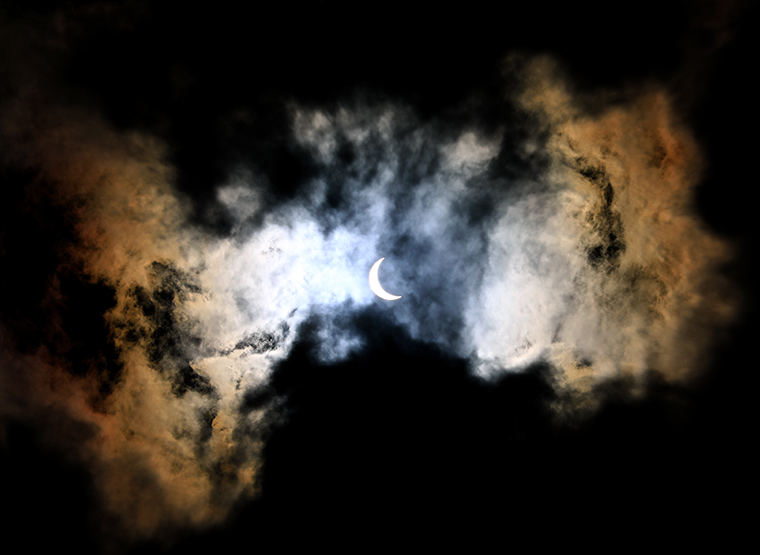On April 8, a total solar eclipse will cross North America, passing over Mexico, the United States and Canada. Missouri is a great place to experience this eclipse.
People in St. Louis will see a deep partial eclipse, with some amount of sky darkening. Those who make the journey to southeast portions of the state will experience totality. They will get to see the moon fully block out the bright solar disk, revealing the structure of the outer part of the sun, the solar corona.
Awe-inspiring eclipses have captured our attention and imagination throughout human history, leading to discoveries that have changed our understanding of the universe.
“The brief view of stars around the sun allowed the first measurements of the deflection of starlight by the sun’s gravity, a first validation of Einstein’s theory of general relativity,” said Jim Buckley, a professor of physics in Arts & Sciences at Washington University in St. Louis. “In ancient Greece, both solar and lunar eclipses played a critical role in determining the curvature of the Earth and the scale of the solar system.”
To explore both the history and implications for today’s research, the Department of Physics in Arts & Sciences is offering a series of lectures on eclipse-related topics.
The lectures, which are free and open to the public as part of the Saturday Science series, are tailored for a general audience. All of the lectures are presented by faculty fellows of the McDonnell Center for the Space Sciences on the Danforth Campus of Washington University in St. Louis, at 10 a.m. on upcoming Saturdays in Crow Hall, Room 201. They include:
- Saturday, Feb. 10: Jim Buckley, professor of physics: “Cosmic coincidence: The science of eclipses.”
- Feb. 17: Manel Errando, assistant professor of physics: “Eclipses through time: Unveiling the celestial tapestry of human history.”
- Feb. 24: Francesc Ferrer, associate professor of physics: “The eclipse that made Einstein world-famous.”
- March 2: Tansu Daylan, assistant professor of physics: “Written in the alignment of planets and stars.”



